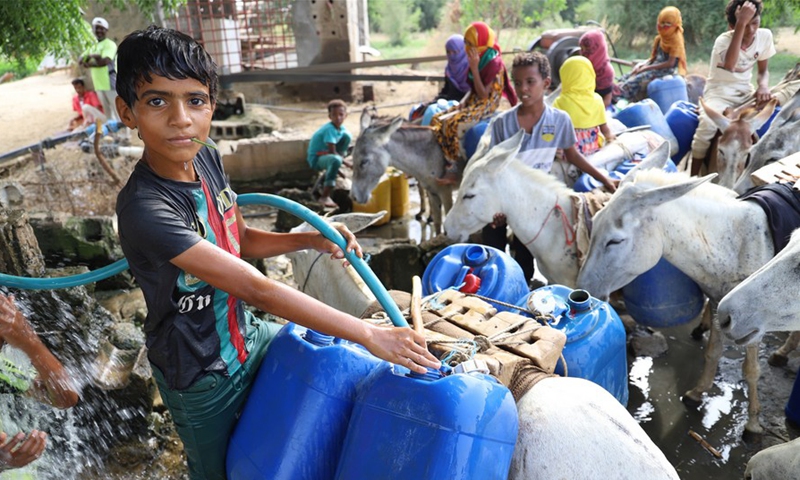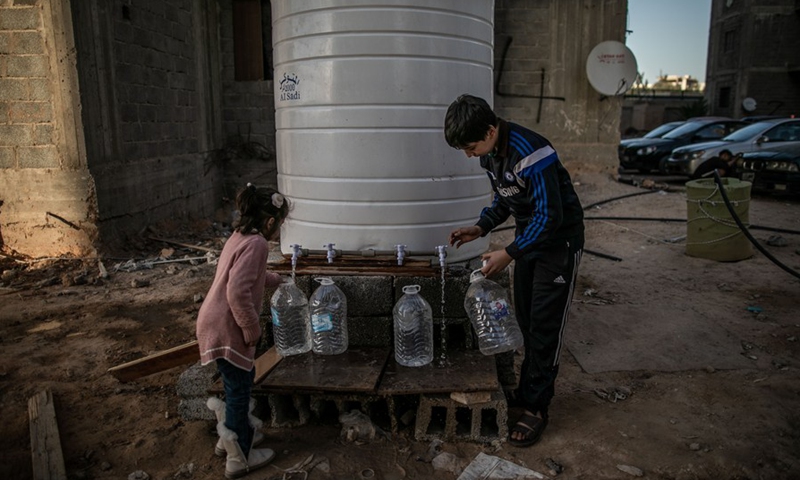
A boy fills plastic bottles with water in Hayran district of Hajjah province, Yemen, July 10, 2020. (Photo:Xinhua)
More than 1.42 billion people across the world, including 450 million children, live in areas of high or extremely high water vulnerability. This means one in every five children worldwide does not have enough water to meet their everyday needs, said the UN Children's Fund (UNICEF) on Thursday.
According to a new UNICEF report, children in more than 80 countries live in areas with high or extremely high water vulnerability.
Eastern and southern Africa has the highest proportion of children living in such areas, with more than half of children (58 percent) facing difficulty accessing sufficient water every day. It is followed by West and Central Africa (31 percent), South Asia (25 percent), and the Middle East (23 percent).
South Asia is home to the largest number of children -- more than 155 million -- living in areas of high or extremely high water vulnerability.
The report identified 37 "hot-spot" countries where children face especially dire circumstances in terms of absolute numbers, the proportions of children affected, and where global resources, support and urgent action must be mobilized. This list includes Afghanistan, Burkina Faso, Ethiopia, Haiti, Kenya, Niger, Nigeria, Pakistan, Papua New Guinea, Sudan, Tanzania and Yemen.

Displaced children fill water containers from a well in a building complex under construction, where hundreds of displaced families live, in Tripoli, Libya, March 2, 2020. (Photo:Xinhua)
"The world's water crisis is not simply coming, it is here, and climate change will only make it worse," said UNICEF Executive Director Henrietta Fore in a press release. "Children are the biggest victims. When wells dry up, children are the ones missing school to fetch water. When droughts diminish food supplies, children suffer from malnutrition and stunting. When floods hit, children fall ill from waterborne illnesses. And when water resources decline, children cannot wash their hands to fight off diseases."
The new report is part of UNICEF's "Water Security for All" initiative to ensure every child has access to sustainable and climate-resilient water services. The initiative aims to mobilize resources, partnerships, innovation and global response to identified hot spots.
"We have to act now both to address the water crisis and to prevent it from getting any worse," said Fore. "We can only achieve water security for every child through innovation, investment and collaboration, and by ensuring services are sustainable and resilient to climate shocks. For our children and our planet, we have to act."
